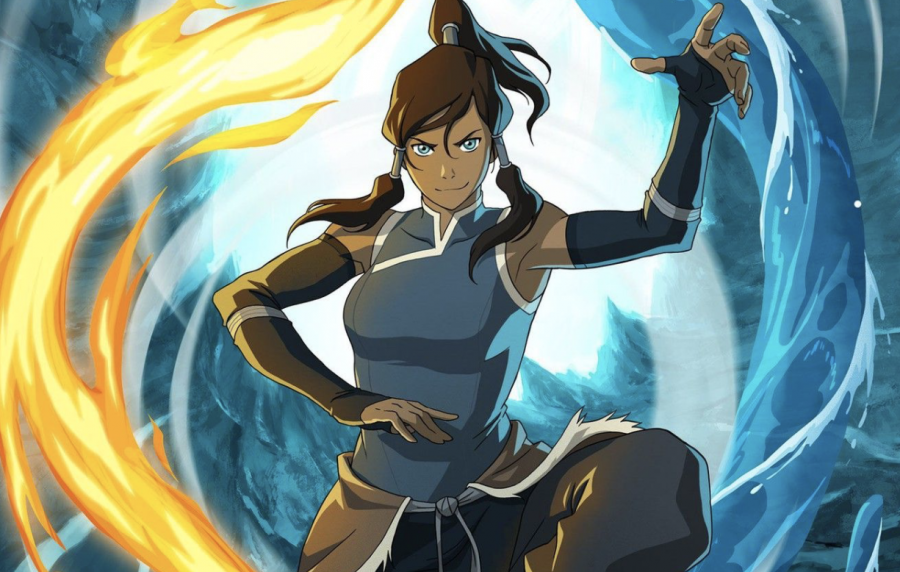In Defense of “The Legend of Korra”
Streaming recommendation of the week 8/28/20
Korra isn’t the Avatar you’re used to, but she might just be the Avatar you need. Courtesy of Nickelodeon™©℗®
August 28, 2020
Since the classic animated show “Avatar: The Last Airbender” hit Netflix in May, the show has seen an enormous surge in popularity, remaining in Netflix’s Top 10 for most of the summer. A great deal of praise has been directed toward “Avatar,” including by yours truly, with critics highlighting its groundbreaking storytelling, traditional adventure elements, endearing characters and noteworthy blending of Eastern mythology with Western animation. It’s a classic tale of friendship with all the fantasy tropes of “Star Wars” or “The Lord of the Rings” that’s managed to remain in the hearts of our generation. Plus, element-bending is pretty cool.
By contrast, “The Legend of Korra,” the sequel show to “Avatar,” has walked a much rougher path, with slightly less critical acclaim and far less fan love than the source material enjoyed. It also faced difficulties in production and distribution, with Nickelodeon pulling it off the air in the middle of its third season to only stream online and slashing the fourth season’s budget considerably.
“Korra” is hardly the “Avatar” sequel that many were expecting. Sure, it contains the same overall concept of being set in a fantasy world where people known as “benders” can manipulate water, earth, fire or air, while an “Avatar,” who can bend all four, is continually reincarnated to maintain balance. However, the show’s overall structure and storytelling is different from the original’s. Gone is an overarching storyline across seasons, such as Aang’s journey to learn all four elements and defeat the Fire Lord in the original show.
Rather, each season of “Korra” is relatively self-contained with their own villains and conflicts. If anything, what connects all four seasons of the show is the character development of the titular Avatar, Korra. Unlike Aang, who initially ran away from the responsibilities of being the Avatar and thus accidentally plunged the world into darkness, Korra is eager to embrace the life of an Avatar. The first time we meet Korra, she is a toddler, already capable of bending water, earth and fire, and proudly proclaims “I’m the Avatar! You gotta deal with it!” But through the series, she faces several villains that challenge whether an Avatar should exist in the first place, and with each battle, she learns more and more about what sort of Avatar she needs to be.
And oh boy, those villains. Far from the imperialistic and overtly evil, yet still captivating, caricatures that made up the primary antagonists of “Avatar,” such as Fire Lord Ozai and Princess Azula, the villains of “Korra” all are more complex in their motivations and bear the brunt of the series’ thematic weight.
Amon, the antagonist of the first season, is driven by the plight of non-benders, who find themselves in an unequal world where all those in power are benders. Unalaq, the antagonist of the second season, is motivated by the lack of spirituality in the modern world and questions Korra’s place as the so-called “bridge” between the physical world and the spiritual world. In season three, Zaheer, an anarchist, instigates a revolt against the monarchy of the Earth Kingdom in order to spread his vision for freedom to the world. Finally, in season four, General Kuvira responds to the uptick in anarchist sentiment by imposing a fascist state. All of these motivations are rooted in real-life issues, from class disparities to religious extremism to the threats of anarchism and fascism.
All these figures ask Korra if the world even needs an Avatar anymore, and she responds by becoming a new kind of Avatar. In this same way, “Korra” is a new type of “Avatar” show, more concerned with its characters and themes than being another adventure for the ages.
While some may deride its relationship drama and love triangles, “Korra” is a show that tries to distance itself from the childhood adventures of “Avatar” by employing the tropes of a teen drama. That being said, the show elevates these tropes into something more, actually building characters like Mako, Bolin and Asami past the cliches they could otherwise embody. Using older characters allows the show to explore different ideas, instead of simply reiterating the primary themes from “Avatar.”
“Korra” delves deeper into real-world topics like terrorism, PTSD, civil unrest and weapons of mass destruction than “Avatar” ever had the freedom to do. And let’s not forget the progress “Korra” made in representation of same-sex relationships in children’s media.
Indeed, “Korra” is not exactly like “Avatar,” but that’s what makes it so special, and why you shouldn’t squander the opportunity to watch it while it’s available on Netflix.



